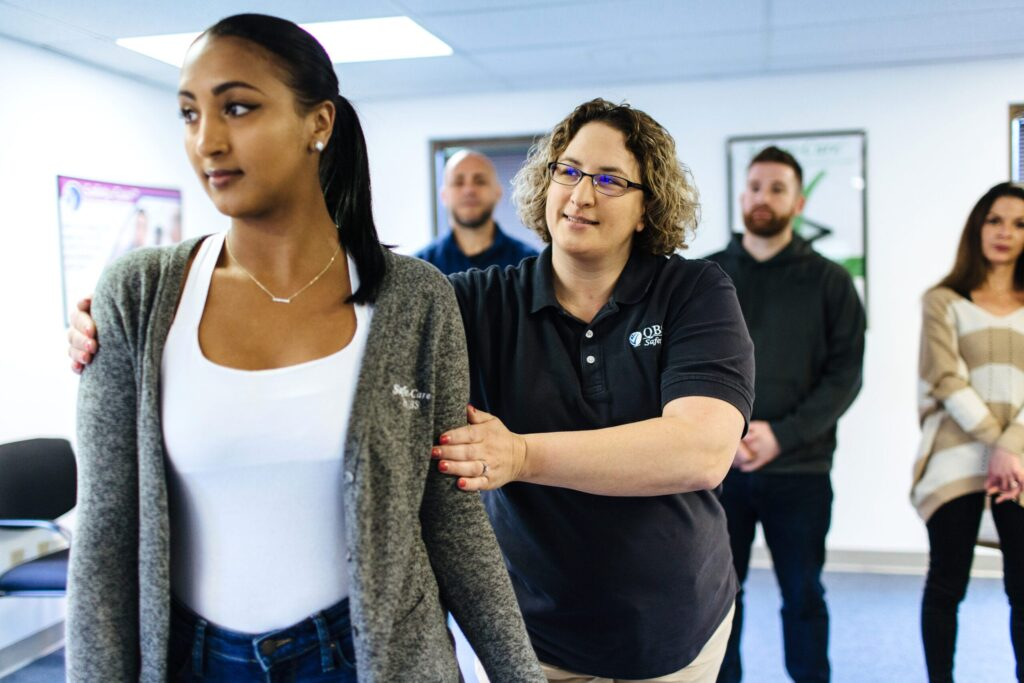Oklahoma Department of Education – Requirements for Use of Restraint
Beginning in June of 2020, all schools in the state of Oklahoma are directed to follow new guidelines regarding the use of restraint. Below is a summary of these requirements and information on how Safety-Care training can be utilized to ensure student and staff safety.
.jpg)
.png?width=88&height=95&name=Group%20137%20(5).png)


How to Implement Safety-Care?
1. Register for a Safety-Care Trainer class or call us to request a closed session for your organization. We regularly conduct classes in all 50 states and Canada.
2. Complete your class to become a certified Safety-Care Trainer for your organization. We bring you to fluency using an errorless teaching methodology.
3. You train and certify your staff in Safety-Care’s effective techniques.
4. Our Master Trainers are available by phone, email, or video to help your organization with any questions or concerns while using or implementing Safety-Care.

Legal Requirements
|
Summary: Effective: September 11, 2020 Last Updated: December, 2024 Beginning in June of 2020, all schools in the state of Oklahoma are directed to follow new guidelines regarding the use of restraint. Below is a summary of these requirements and information on how Safety-Care training can be utilized to ensure student and staff safety. How Safety-Care aligns: Numerous education organizations throughout the United States and Canada rely upon QBS and our Safety-Care training to provide their staff members with the training they need to help maintain a safe and healthy environment. Safety-Care provides a comprehensive, supportive approach to incident prevention, de-escalation, and management. Your Staff will learn practical strategies for helping students that use evidence-based practices consistent with PBIS (Positive Behavior Interventions and Supports) and ABA (Applied Behavior Analysis). |
|
(c) Student restraint. Chemical restraint and/or mechanical restraint of a student is prohibited in Oklahoma public schools. Physical restraint of a student should never be used for the purposes of discipline, punishment, forcing compliance, or as a convenience to staff. In cases where a student has a history of dangerous behavior for which physical restraint was used or considered, the school should have a plan in place for teaching and supporting more appropriate behavior and determining positive methods to prevent behavioral escalations that have previously resulted in the use or consideration of restraint. Physical restraint may only be used under emergency circumstances as outlined below. How Safety-Care aligns: Safety-Care can be a vital part of any developed workplace violence prevention plan. Safety-Care is uniquely designed to provide trainees with the skills to assess potential crises, how de-escalate these situations, and how to respond if the situation is elevated. Our trainings are trauma-informed and focus on modifying behavior to prevent dangerous outcomes. Safety-Care is focused on encouraging positive behavior prior to the use of any other intervention strategy. Our approach stems from the use of Positive Behavior Intervention and Supports (PBIS) that can prevent and manage challenge behavior. Safety-Care as a training program can be tailored to meet the needs of multiply organizations and professions. All Safety-Care offerings are trauma-informed and utilize PBIS and ABA to ensure that all trainees are equipped with the appropriate responses to challenging behaviors. Additionally, add-on trainings can be provided for unique situations to your facility. |
3(1) Circumstances under which physical restraint of a student is authorized. A student may be physically restrained only if:
|
| (2) Conditions required during an authorized use of physical restraint. If a student is placed in physical restraint during an emergency situation that meets the criteria of (c) |
(1) above, the following precautions must be exercised throughout the time the student is restrained:
|
Why Safety-Care?
Benefits & Differentiators
In addition to Safety-Care being highly cost-effective, you get:

Skills to effectively prevent, minimize, & manage behavioral challenges with dignity, safety, & the possibility of change

Decreases in staff and patient injuries and reduction in restraint & seclusion time

Instructional procedures based on decades of evidence-based research & compatible with ABA, PBIS & reinforcement-based environments

Customizable program for your setting, staff & clientele, with a strong focus on preventative via non-intrusive, replacement behaviors

Extremely rigorous standards grounded in errorless teaching methodology

Small, intimate class sizes backed by unlimited support & resources
How Is Safety-Care So Effective?
A Genuine Focus on Implementing & Managing Positive Behavioral Skills
Proactive, environmental management recommendations
Understanding of evocative effects of staff behavior
In-depth analysis of antecedents and proactive antecedent interventions
Evidence-based reinforcement procedures
Required competency in de-escalation skills
Humane, non-invasive touch and QBS Check™ strategies
Evidence-based teaching procedures
Applicable to a wide array of settings, conditions & challenging behavior





